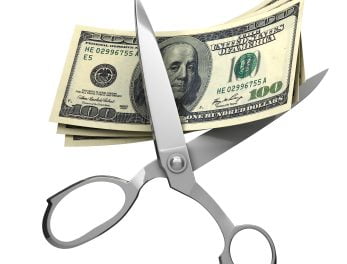U.S. family net worth dropped to 1990 rates in 2010, according to the Federal Reserve’s (the Fed’s) Survey of Consumer Finances. The report focuses on middle-income families, who have suffered greater financial losses than low-income and high-income families during the Great Recession and Lesser Depression. To compare apples to apples, all figures in the report are adjusted for inflation to better judge the standard of living.
According to the Federal Reserve:
- the national median family income dropped from $49,600 in 2007 to $45,800 in 2010;
- median family net worth dropped from $126,400 in 2007 to $77,300 in 2010; and
- 75% of lost net worth resulted from the housing bust.
Surprisingly, consumer spending did not fall with family income during these 20 years. The reason? Savings rates declined during this period and the rate of debt repayment slowed. The percentage of families saving money dropped from 56% of families in 2007 to 52% of families in 2010.
Yet, the dollar amount of savings increased between 2007 and 2010, suggesting those who did save saved at a higher rate than before, while other families did not save at all. Families who did save during this period reported that they were not saving for down payments, education costs or retirement, but as a precaution against future economic crises.
Median home equity fell from $110,000 in 2007 to $75,000 in 2010. Credit card debt fell 7% between 2007 and 2010, while education debt rose 4%.
first tuesday take
For mid-tier home sales, the Fed’s survey does not bode well. The narrow segment of middle-income families saving more may constitute a small population of future homebuyers. The majority of others will remain inactive as homebuyers due to their negative equity tether or lack of personal savings.
Gone are the days of lenders agreeing to home loans with marginal down payments. Instead, lenders are growing more cautious and the Consumer Financial Protection Bureau (CFPB) is demanding stricter down payment requirements as part of the still-evolving qualified residential mortgage (QRM). The proposed 20% down payment requirement for QRMs has made many squirm, but is really just a return to the fundamentals of a healthy real estate market.
Related articles:
Qualified residential mortgages and the 20% down payment: no fear
The 20% solution: personal savings rates and homeownership
The 20% quagmire
Naturally, reduced savings rates are inseparable from reduced employment and income. However, when reduced savings rates and reduced employment are coupled with steady consumer spending, the problem is revealed to be less an economic problem than a sociological lifestyle issue. Until Californians adjust their thinking to include the necessity of financial preparation for the future, savings rates will remain low — and homeownership for those without savings is not under consideration.
This means that those whose bread and butter are single family residence (SFR) sales need to start broadening the scope of their professional services. Fewer home sales mean greater rental activity, which also means greater need for property managers. Alter your practice to fit the needs of the market.
When you close the deal for your buy-and-hold investor, offer to supervise the location of tenants, and maintenance and management of the property. The dynamics of the market are changing, but remember: there is more than one way to practice real estate.
Re: “Family Net Worth Drops to Level of Early ’90s, Fed Says” from The New York Times



















